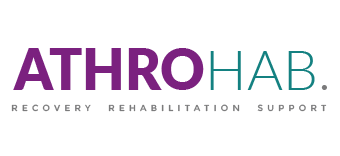The Brace Guide from Athrohab – Part 3
Muscle pain, sprain, tear, cramp and degenerative joint disease
Sore Muscles
When muscles are loaded beyond their normal capacity, it is common that they can feel sore afterwards. The muscle might become both stiff and sore, which can cause pain when it’s loaded. It’s important to listen to the body signals, for example if you exercise with reduced intensity and loading, the pain will go away.
Increased circulation will make the recovery faster and muscle soreness should decrease after a few days, after which you should be completely pain free.
Using a brace with it’s heating effect in combination with stretching can be a very positive way to reduce your pain, stiffness and discomfort.
Sprains
A sprain means that a ligament over a joint is over-stretched or even tears partially. The pain can be weak in the early stage, but a couple of hours later the pain can increase along with the swelling. The swelling can cause a downward spiral with pain and reduced activity, which in turn causes even more swelling.
With all sprains there could be the risk of fracture, so seek medical attention as soon as possible.
The most common sprains are:- knee, ankle and finger sprains; but also the shoulder, elbow and knee-cap can be affected.
The function of the ligament is not only to stabilize the joint, but also works as a sensor that can feel what position the joint is in. When the ligament is injured this ability will be reduced which can make it easier to cause further damage to yourself.
A brace can activate the receptors in the skin which take over parts of the lost function. Physiotherapy with balance and coordination exercises are important in the rehabilitation process.
It is difficult to estimate the time for recovery. Uncomplicated injuries can take 6-8 weeks to heal completely. It’s common that you feel much better after 2 weeks, however it takes a much longer time to heal completely. A good indication is when you have the same strength and can tolerate the same loading and activity with your injured body part as with your uninjured one. More complicated sprains can take as long as a complicated fracture to heal.
Muscle Tear
The structure of muscle is built pretty much like a heavy rope with several smaller fibres making up a large muscle. The muscle has two or more attachments and can extend and flex.
The function of the muscle is to steer the joint in the right direction and to stabilize it. This is possible through a complex interaction between the brain, nerves, receptors, muscles and ligaments.
A muscle tear may be partial or complete and caused either by a direct blow or by over exertion. It can happen if the muscle is forced out of its normal range of motion or during rapid movements where the muscle is not prepared or properly warmed up.
The pain might come suddenly and any contraction of the muscle will cause pain. You may also feel a defect of the muscle, a bump or an indentation at the most painful site. After a while the muscle will feel stiff and every contraction will be painful. The tear can be superficial or deep but all will cause bleeding. If the fibres are torn inside a muscle this bleeding will cause swelling inside the muscle. The swelling has nowhere to go, and as a result will cause weakness, stiffness and pain.
Apply a compression bandage immediately after the injury to decrease the bleeding.
If you have a severe muscle tear preventing you from walking without extensive pain, you should seek professional medical attention immediately.
Massage is absolutely forbidden during the first days as it will cause additional trauma and interfere with the healing process.
A light compression bandage or brace can be very comfortable and can reduce swelling.
Returning to activity should not be done until you are completely pain free and have full muscular strength and flexibility. The goal should always be to have similar strength and function as the uninjured body part.
Muscle Cramp
After hard exercise it’s easy to get a muscle cramp. They are normal and uncomplicated if they occur only occasionally. What actually happens is not clear. One theory is that the body is low on minerals and salts, which can cause the cramps. You should always pay attention to recurring problems, and particularly nocturnal leg cramps. They may be signs of circulatory problems and should be investigated by a medical professional. Infections can also be an underlying cause.
Degenerative Joint Disease
Osteoarthritis is the most common human joint disease. The joint surfaces are subject to degenerative changes which causes damages to the cartilage. The most common reasons are genetic factors, trauma or deformities.
Trauma or fractures in the joint can also cause damage that later in life develop into osteoarthritis. The pain can be very intense, especially after a period without activity or in the morning. Problems with extending the joint are common and the range of motion will decrease as the disease progresses.
New medicines have been launched over the last several years which have been shown to be very effective.
Moderate exercise is very important as treatment. It both prevents as well as eases the problems. Weight loss has also been shown to be a very effective way to reduce pain, even for people with normal weight.
A brace will provide support, protection, heat and pain relief.






